Mental health-related workplace absence is rising, leading to rising costs for UK businesses. Unhappy employees are often disengaged, which impacts their work and, ultimately, the company. Conversely, happier, engaged employees are more productive and deliver better service. Here, we explore the importance of employee well-being and how asking and acting on feedback will boost ROI, driving business success.
Table of contents:
- Who benefits from investing in employee well-being?
- How does a bad employee experience impact ROI?
- When is the right time to prioritise well-being?
- Where can I find resources to support my employees?
- How do you measure the ROI of employee well-being?
- How do I develop an employee development plan?
Who benefits from investing in employee well-being?
Investing in employee well-being benefits everyone involved. Your employees are the heart of your company, and their happiness directly influences productivity and customer service, driving overall success.
Undeniably, workplace stress is a significant factor in absenteeism, affecting both short- and long-term outcomes. Did you know that 39% of European workers experience negative emotions daily? Undoubtedly, this emphasises the pressing need to address workplace stress.
The prevalence of stress in the UK is alarming, with 9 in 10 adults reporting high or extreme stress levels in the past year. Consequently, this highlights the urgent need to implement measures supporting employee well-being and alleviating workplace pressures.
Corporate burnout, often glamorised as a symbol of dedication, undermines employee well-being. Unquestionably, prioritising quality over sheer hours worked is crucial for maintaining a healthy work environment.
Prioritising the employee well-being isn’t just about compassion—it’s a strategic imperative. A supportive workplace culture can empower employees to thrive, increasing productivity and overall business success. The one simple (but essential) thing leaders can do to improve employee engagement is check in with their staff to see how they feel.
How does a bad employee experience impact ROI?
A poor employee experience can significantly impact ROI, productivity, retention, and overall business success.
Gallup’s State of the Global Workplace: 2023 Report reveals most (59%) of the world’s employee’s are “quiet quitting”. Therefore, these employees are filling a seat and watching the clock rather than fulfilling their potential. Moreover, according to Gallup, low engagement costs the global economy £6.9 billion, accounting for 9% of global GDP. On the other hand, low-engagement workers present a significant opportunity for economic growth.
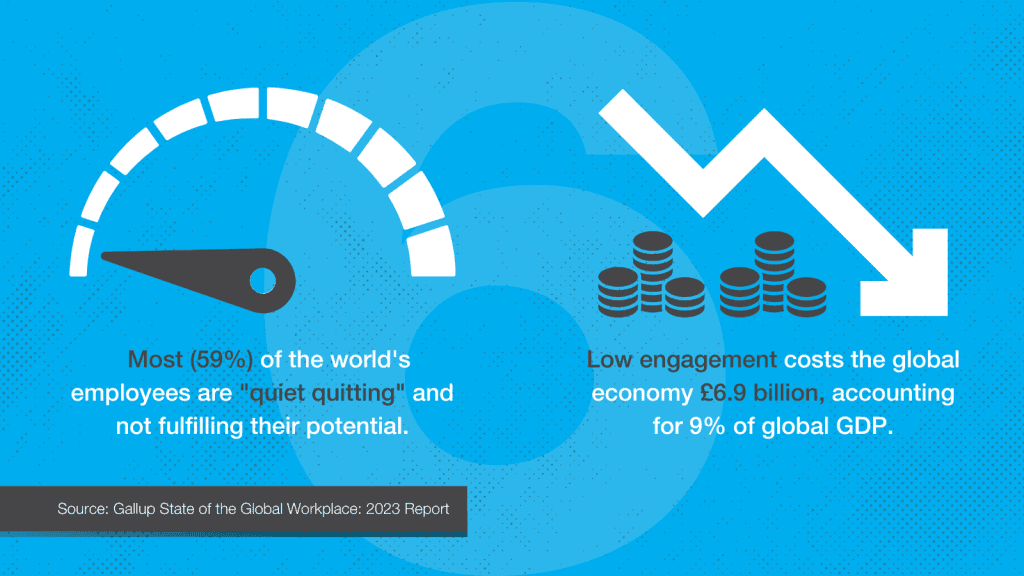
Did you know that the Europe has one of the lowest percentages of engaged employees, with only 13% reported as actively engaged? However, 72% of workers in the regional percentage are disengaged. Additionally, 15% are actively disengaged. These employees take actions that directly harm the organisation, undercutting its goals and opposing its leaders.
Amidst companies grappling with supply issues and staffing shortages, a bad employee experience can significantly harm the customer experience (CX). In our blog, “Employee Experience: The High Cost of Getting it Wrong,” we look into the high cost of this issue.
According to the Institute of Customer Service, several service issues cost UK firms £9.24bn monthly in complaints handling. Therefore, a hostile work environment affects employees and damages the company’s reputation and customer satisfaction.
Conversely, companies that invest in their workforce and deliver a positive employee experience reap the benefits. Studies show that companies with highly engaged employees experience a 10% increase in customer satisfaction and a 20% increase in customer loyalty.
When is the right time to prioritise well-being?
There isn’t a single perfect time to prioritise employee well-being; it should be woven into a business’s culture to genuinely care for and nurture a workplace environment. However, critical moments such as welcoming new team members or expanding your workforce offer particularly opportune times to emphasise this focus. Nonetheless, it’s never too late to do so.
The global pandemic has caused unprecedented disruptions in the workforce. Remote work is becoming more common, and the need for connection is becoming even more pronounced.
Many employers tried their best to implement certain benefits and support. However, according to Mercer, there’s a notable difference between employers’ beliefs about their benefits and employees’ actual experiences. While 89% of organisations think their benefits adequately supported employees during the pandemic, only 64% of employees feel the same way. This highlights the need for improved communication and benefits delivery. Moreover, it’s crucial to gauge employees’ real-time feelings to address their needs swiftly.
At insight6, we partner with organisations to obtain real-time actionable insights using our innovative online feedback tool, instant insight. By empowering employees to feel valued and listened to, we enable them to focus on tasks that drive impact, ultimately increasing sales, customer loyalty, and profitability.
Where can I find resources to support my employees?
You can find resources to support your employees from various sources, including non-profit organisations like The Stress Management Society and Mind Mental Health Charity, which offer guidance and assistance in recognising and reducing stress. Here at insight6, we can help by providing an online tool to obtain employee feedback, check in on well-being and provide training and development workshops to enhance employee experiences.
Additionally, don’t overlook internal resources such as your HR Department, outsourced suppliers, and Employee Benefits Specialists who can offer tailored solutions and support programmes. Occupational Health Services and Employee Assistance Programs (EAPs) also provide valuable assistance for both physical and mental well-being. Accessing these diverse resources ensures comprehensive support for your employees’ needs.
How do you measure the ROI of employee well-being?
Measuring the ROI of employee well-being can be done through various approaches.
Financial Metrics: To measure ROI, analyse reduced healthcare costs, decreased absenteeism, lower turnover rates, and increased productivity. Quantify and compare these metrics against the investment in employee well-being programmes.
Employee Surveys: Regularly survey employees to gauge satisfaction, engagement, and well-being. Compare survey results before and after implementing well-being initiatives to assess impact and ROI.
Productivity Metrics: Evaluate productivity changes, such as increased output, improved quality, and reduced errors, to gauge employee well-being’s ROI. Track these metrics over time to identify the impact of well-being programmes.
Employee Retention: Monitor employee retention rates pre-and post-implementation of well-being initiatives to determine ROI impact.
Absenteeism and Presenteeism: Track absenteeism rates and measure the impact of well-being programmes on reducing absenteeism. Additionally, presenteeism must be assessed to determine the effectiveness of well-being initiatives.
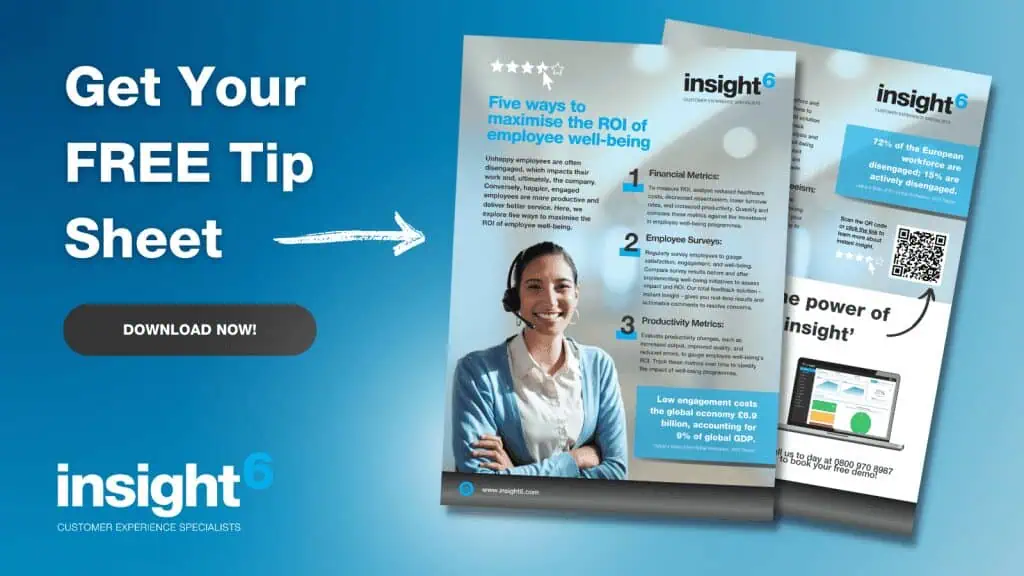
By integrating these measurement strategies, organisations can unlock the true ROI of employee engagement initiatives. Equally, with valuable insights, you can confidently make data-driven decisions to bolster well-being and propel your business forward.
How do I develop an employee engagement plan?
Putting employee well-being and engagement first is crucial for businesses aiming to stand out, attract new customers, and secure long-term success.
- Assess your current situation. Conducting surveys, hosting focus groups, or reviewing performance feedback to understand where you are right now.
- Set clear goals. Defining objectives is vital, whether you’re enhancing communication, nurturing a positive work culture, or developing your career.
- Create specific strategies and initiatives. Think of regular team-building activities, professional development opportunities, or refining communication channels.
- Involve your employees every step of the way. Their input and feedback are invaluable in shaping and refining your engagement plan.
- Review and refine. Regular monitoring and evaluation ensure you can make necessary tweaks for continuous improvement and success.
As a UK-based customer experience company, we’ve witnessed firsthand the profound influence of employee engagement on customer interactions and brand reputation. Furthermore, engaged employees are vital for delivering exceptional products and services.
Understanding your employees’ perspectives is crucial. Our total online feedback solution, instant insight, provides a seamless and affordable method for collecting and analysing feedback from your team and customers. By collaborating with insight6, you can gain invaluable insights to develop a plan for employee engagement and drive business growth.
Using instant insight, you will:
- Gather employee feedback effectively.
- Collect customer feedback efficiently.
- Gain real-time analysis and reporting.
- Obtain actionable comments promptly.
- Improve products and services based on insights.
- Benchmark against competitors quickly.
- Boost positive online reviews.
Conclusion: The impact on ROI
Investing in our employees’ well-being is imperative, not optional. Furthermore, prioritising their welfare and enhancing the employee experience strengthens resilience, elevates job satisfaction, and directly impacts operations, leading to increased profitability and ROI. By partnering with insight6, you’ll gain invaluable insights into factors shaping your employee experience and strategies to enhance it for business success. Don’t let the cost of stressed or disengaged employees affect your bottom line. Contact us today for a no-obligation chat or request a demo of instant insight to see how we can revolutionise your business!
Like what you’ve read? Sign up for the insight6 newsletter to stay ahead of the competition and receive the latest insights and strategies to enhance your customer experience.
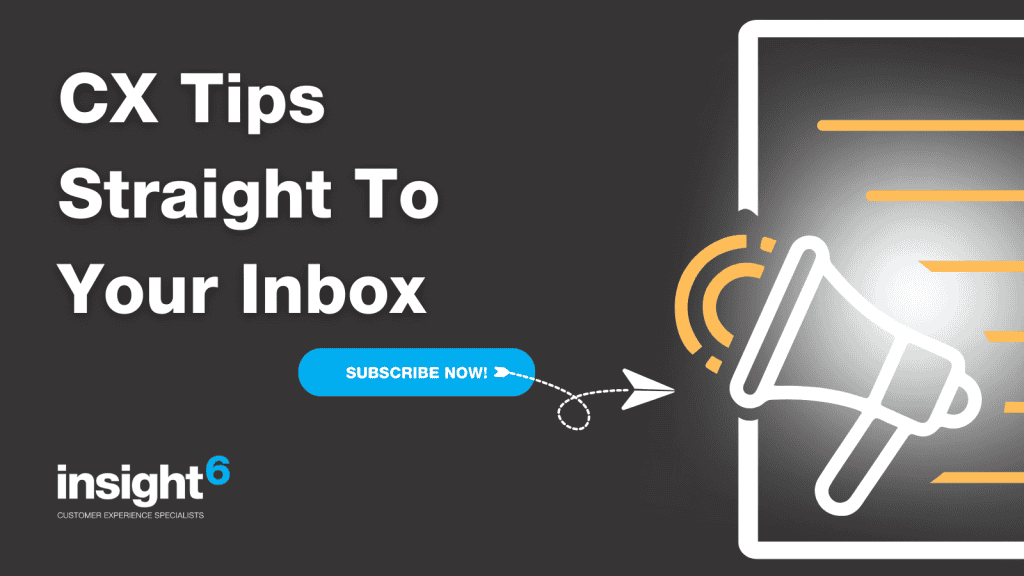

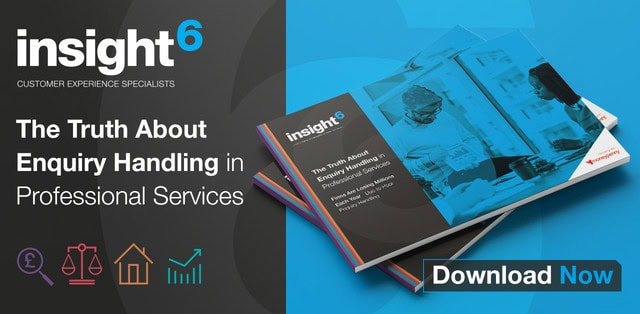
0 Comments